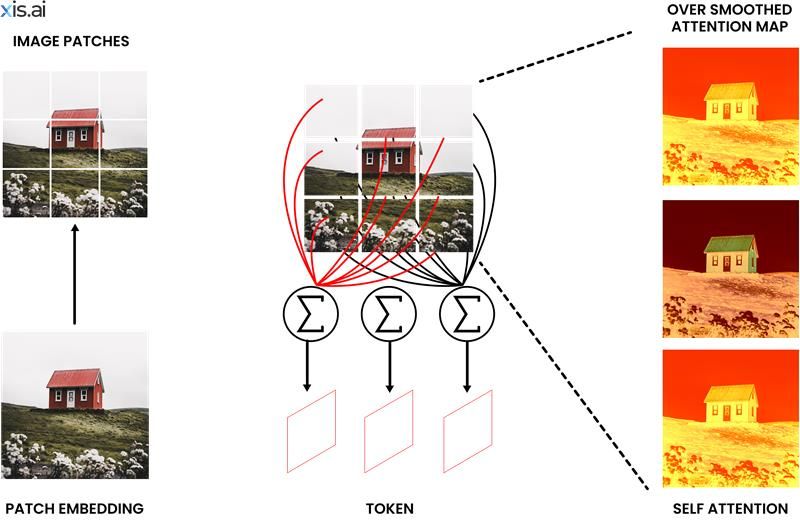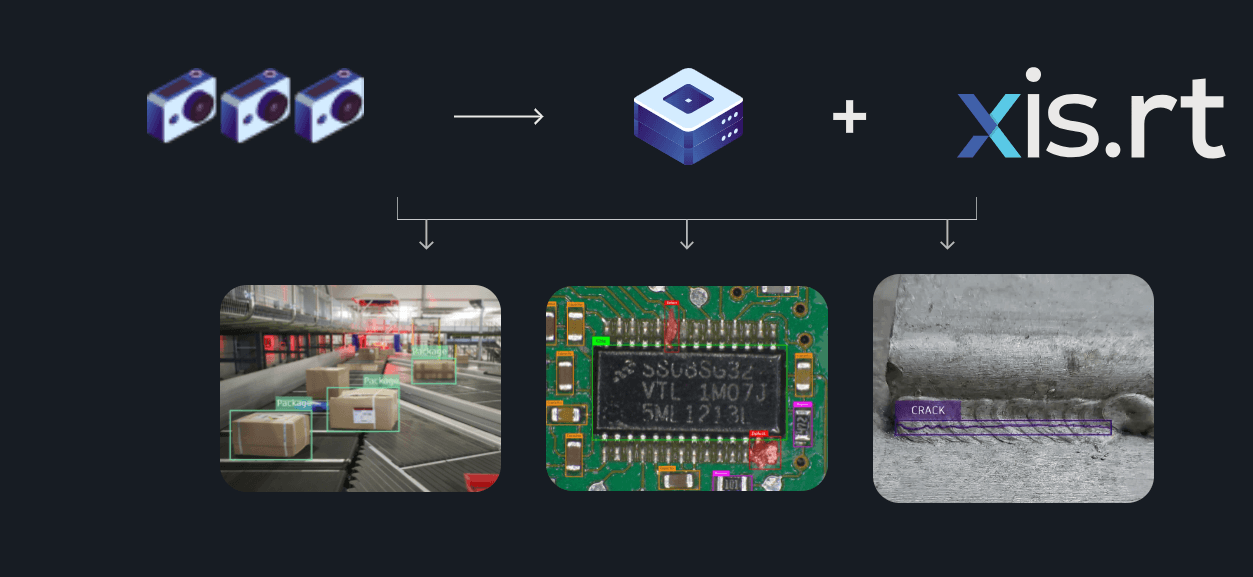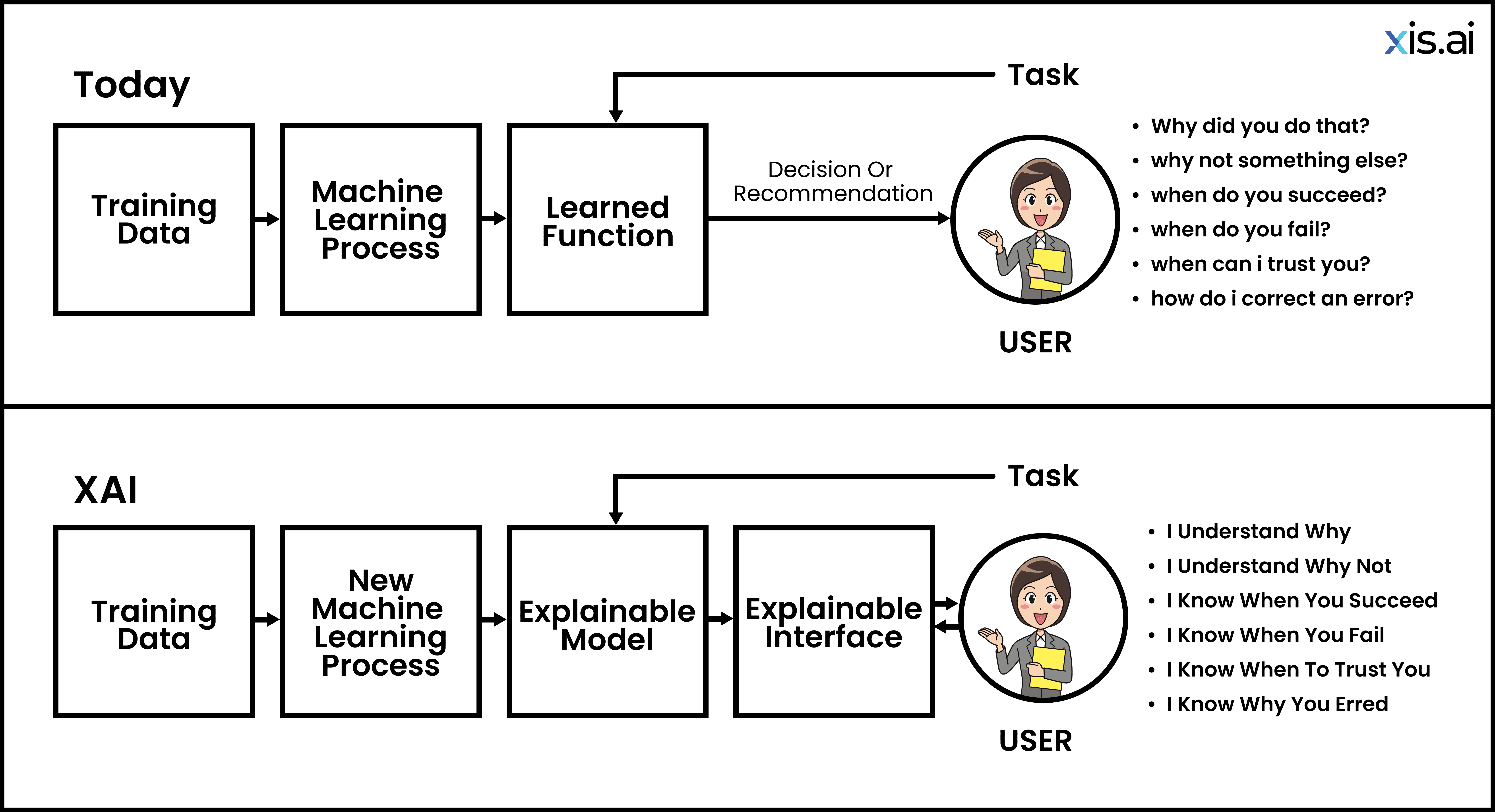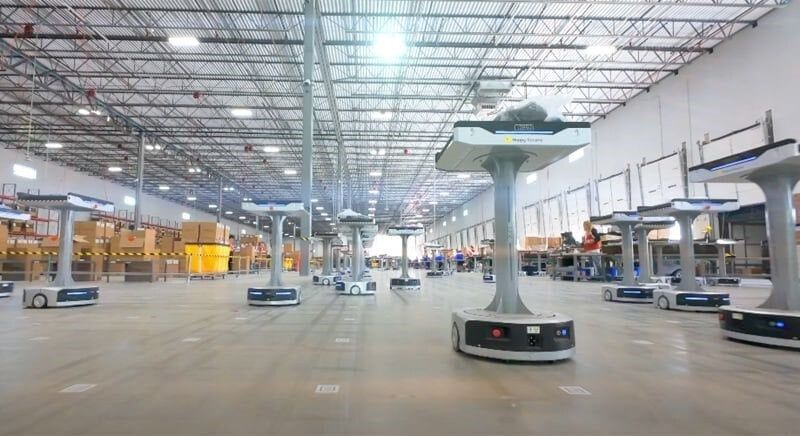Evolution of Computer Vision Trends You Need To Know
Recent Post:

Computer Vision (CV) is a rapidly advancing field of Artificial Intelligence (AI) that enables machines to analyze and interpret the visual world.
Looking ahead to 2025, computer vision is taking advantage of advancements in deep learning, edge computing, and real-time analytics. While these developments enhance efficiency and decision-making across industries, they also complicate ethical issues related to privacy and bias. In this blog, we explore the key trends shaping the future of computer vision and their effects on technology, businesses, and society.
Emerging Computer Vision Trends for 2025
1. Vision Transformers (ViTs):
The impact of Vision Transformers (ViTs) in computer vision has been revolutionary due to their tremendous precision in image analysis. ViTs surpassed the methodology of Convolutional Neural Networks (CNNs), whereby images are divided into smaller fragments for processing. With self-attention, ViTs are now able to process entire images simultaneously. Such advancements have ensured that object classification and segmentation have improved continuously. In 2023, industries started embracing ViTs technology and the paradigm shift helped push the performance boundaries. The growth for ViTs has also been booming due to the efficient usage of large labelled datasets. And as ViTs continue to improve, so does their enhancement to AI-powered vision systems.

2. Edge AI for Faster, Real-Time Processing:
The transition from cloud-based AI vision systems to Edge AI enables real-time analysis on smart cameras, drones, and autonomous vehicles. By processing data locally, Edge AI reduces latency, enhances efficiency, and improves privacy, which is crucial for self-driving cars and security systems. xis.ai plays a key role in this shift, providing AI-powered edge solutions that enable rapid decision-making and optimized quality inspection. With the xis Suite, industries can take advantage of on-device AI for faster insights, lower costs, and greater security in an increasingly interconnected world.

xis.rt enables real-time AI-powered visual inspection for fast and accurate quality control.
3. Generative AI:
Generative AI is reshaping computer vision by generating synthetic data for training models in facial recognition and object detection, reducing costs and privacy risks. It also automates data labeling, making the process faster and more efficient.
Powered by technologies like GANs and diffusion models, generative AI creates realistic outputs from text, images, audio, and video. In 2025, it will drive advancements across industries like healthcare, entertainment, and research, addressing data scarcity and accelerating AI innovation.

4. 3D Computer Vision:
Three-dimensional computer vision aims to capture 3D visual data to improve depth perception and object recognition. This is achieved through two methods: capturing images through different cameras situated at distinct angles, and using light sensors. LiDAR and depth-sensing technologies measure the time it takes for emitted light to bounce back after hitting an object. They increase precision in measuring depth, which is pivotal in robotics, self-driving cars, and digital twins, virtual representations of real-world objects for simulation, design, and predictive analytics.

3D Pose Estimation for a Dance Video Source
5. Ethical AI and Bias Reduction in Vision Models:
AI bias continues to be a significant problem regarding facial recognition and even hiring systems. There have been efforts to formulate ethical AI guidelines to ensure that computer vision systems are less biased and, to a degree, more equitable.
Expanding on the point above, bias in AI is commonplace, but it is much easier to identify in computer vision. For example, it is much more difficult for facial recognition software to identify individuals with darker skin, leading to erroneous outcomes during security checks and even law enforcement.
To address this, AI systems in 2025 have rules concerning fairness, transparency, and data privacy to adhere to. Companies need to review their training data to ensure that it does not contain any bias and that their AI systems do not produce unfair and inaccurate information.
6. Explainable AI (XAI) for Transparent Decision-Making:
Given the importance of AI in fields such as health services, financial activities, and security provisions, it is crucial to establish how decisions are made. This is the function of Explainable AI (XAI); it guarantees that AI systems provide logical and reasonable explanations for their actions.
Many AI systems operate as “black boxes,” which signifies we do not know the reasoning behind the decisions made. This lack of transparency can cause several problems such as biased outcomes and diminished confidence. XAI achieves this goal by increasing the transparency and interpretability of AI systems, making them easier to trust.

Explainable AI (XAI)
8. Automated Guided Vehicles (AGVs):
AGVs are automated machines employed for logistic operations like managing stock in warehouses or transportation in factories. They use onboard computers and sensors to avoid obstacles, track their position, and follow guiding systems. AGVs do not function in completely autonomous systems like self-driving cars. They work in confined spaces and have little autonomy, requiring AV guidance to work optimally. Their degree of speed, accuracy, and utility in industrial settings continues to expand as advanced vision technology develops.

Automated Guided Vehicles (AGVs) Source
8. Multi-Modal AI:
AI is evolving beyond just processing one type of data. Multi-modal AI combines computer vision with text, speech, and other data sources, making systems smarter and more context-aware. For example, it enables applications like Visual Question Answering (VQA), where AI can understand and respond to questions about images. In computer vision, this means AI can use text descriptions, voice commands, or sensor data to improve accuracy and decision-making.

Artificial-intelligence technology devices using voice command
9. Detecting Deepfakes:
It is now increasingly difficult to distinguish between what is real and what is AI deepfakes due to how sophisticated deepfakes are becoming. As the technology progresses, the spread of misinformation and propaganda becomes easier, which is concerning. To combat these issues, computer vision (CV) is crucial as it examines images and identifies alterations made to them. With the rise of AI, protecting the public from false information will significantly rely on CV.

Original & Deepfake Difference
10. Self-Supervised Learning:
Self-supervised learning, or SSL, has advanced AI models like Vision Transformers while powering the next generation of AI models. SSL is allowing robotics, surveillance, and healthcare to transition into something more real-time while reducing the impact of human bias through AI. Algorithms now being designed for computer vision using self-supervised learning could offer help during the annotation process.
11. Automated Visual Inspection:
The shift toward automated visual inspection is now the top most growing trend as industries prioritize efficiency and accuracy. AI and computer vision have made automated defect detection faster, more reliable, and scalable, reducing dependency on manual inspections. With increasing quality standards in industries like manufacturing, electronics, automotive, and pharmaceuticals, companies utilize AI-driven systems to minimize human error, enhance production speed, and ensure regulatory compliance.
xis.ai is at the forefront of this transformation, offering advanced AI-powered visual inspection solutions that detect defects with high precision, optimize quality control, and improve overall operational efficiency. By integrating deep learning models and real-time analytics, xis.ai enables manufacturers to achieve superior quality assurance, making AI-driven inspection an essential part of modern industrial processes.
The Path Forward:
The evolution of computer vision is rapidly reshaping industries by enhancing efficiency and decision-making. With breakthroughs in Vision Transformers, Edge AI, Generative AI, and 3D computer vision, the field is progressing toward more powerful and autonomous systems. Ethical considerations, such as bias reduction and explainable AI, are becoming essential to ensure fair and responsible AI deployment. Meanwhile, trends like multi-modal AI, self-supervised learning, and automated visual inspection are paving the way for more intelligent and adaptive applications.
As computer vision continues to evolve, businesses must stay ahead by taking advantage of these advancements. Companies like xis.ai are driving this transformation, providing innovative AI-powered visual inspection solutions to optimize quality control and improve operations. By embracing these emerging trends, industries can unlock new possibilities, improve productivity, and shape a future where AI-driven vision systems enhance every aspect of technology and society.
FAQS: Frequently Asked Questions
- What are Computer Vision Tasks?
Computer vision involves various tasks that enable machines to interpret and process visual data. These tasks include:
- Image Classification: Identifying objects in an image (e.g., cat vs. dog).
- Object Detection: Locating and classifying multiple objects in an image.
- Segmentation: Dividing an image into meaningful parts (e.g., medical imaging).
- Facial Recognition: Identifying individuals from images.
- Optical Character Recognition (OCR): Extracting text from images or scanned documents.
- Pose Estimation: Identifying the position of a body or object in an image.
2. Can Computer Vision Syndrome Be Cured?
Computer Vision Syndrome (CVS), caused by prolonged screen exposure, can be managed and relieved but not entirely "cured." Solutions include:
- Following the 20-20-20 Rule (look 20 feet away every 20 minutes for 20 seconds).
- Adjusting Screen Settings (brightness, contrast, and font size).
- Using Blue Light Filters to reduce strain.
- Blinking Frequently to prevent dry eyes.
- Ergonomic Adjustments (proper screen distance and posture).
3. Why is Computer Vision Important?
Computer vision is crucial because it enables machines to see, analyze, and make decisions based on visual data, just like humans. It powers applications in healthcare (medical imaging), automotive (self-driving cars), security (facial recognition), manufacturing (quality inspection), and retail (customer analytics). By automating visual tasks, computer vision improves efficiency, accuracy, and safety in various industries.
4. When Was Computer Vision Invented?
Computer vision emerged in the 1960s as a field of artificial intelligence. Early research focused on teaching computers to interpret 2D images. In the 1970s and 1980s, advancements in machine learning and neural networks improved object recognition. The deep learning revolution in the 2010s led to modern applications in autonomous vehicles, healthcare, and AI-powered surveillance.
5. How Does Computer Vision Work?
Computer vision works by processing visual data through AI models and deep learning algorithms to recognize patterns and extract information.
The key steps include:
- Image Acquisition: Capturing images or videos via cameras or sensors.
- Preprocessing: Enhancing quality (e.g., noise reduction, contrast adjustment).
- Feature Extraction: Identifying shapes, edges, and colors.
- Model Training & Inference: Using machine learning models (CNNs, GANs) to analyze and classify data.
- Decision Making: Outputting insights or actions (e.g., detecting defects in manufacturing).
6. Computer Vision with Python
Python is widely used for computer vision, thanks to powerful libraries like:
- OpenCV: Image processing and feature extraction.
- TensorFlow & PyTorch: Deep learning for object detection and classification.
- scikit-image: Image filtering and enhancement.
- YOLO (You Only Look Once): Real-time object detection.
With Python, developers can build applications for face recognition, medical imaging, and automated visual inspection.
7. Computer Vision Algorithms
Popular computer vision algorithms include:
- Convolutional Neural Networks (CNNs): Power deep learning-based vision tasks.
- YOLO (You Only Look Once): Real-time object detection.
- Haar Cascades: Used in facial recognition.
- SIFT (Scale-Invariant Feature Transform): Object recognition based on key features.
- R-CNN (Region-based CNN): Object localization and segmentation.
8. Why is AI Visual Inspection a Top Computer Vision Trend in 2025?
AI-powered visual inspection is a leading computer vision trend in 2025 because of its ability to automate and enhance quality control processes. Factors driving this trend include: - Increased Demand for Automation: Industries seek faster, more accurate inspections with minimal human intervention.
- Advancements in AI & Edge Computing: AI-driven inspection can now process data in real time, reducing errors and improving efficiency.
- Stricter Quality Standards: Industries like pharmaceuticals, automotive, and electronics rely on AI to meet compliance regulations.
- Cost Reduction: AI eliminates the need for manual inspections, lowering labor and operational costs.
Comment
0Comments
No comments yet.


